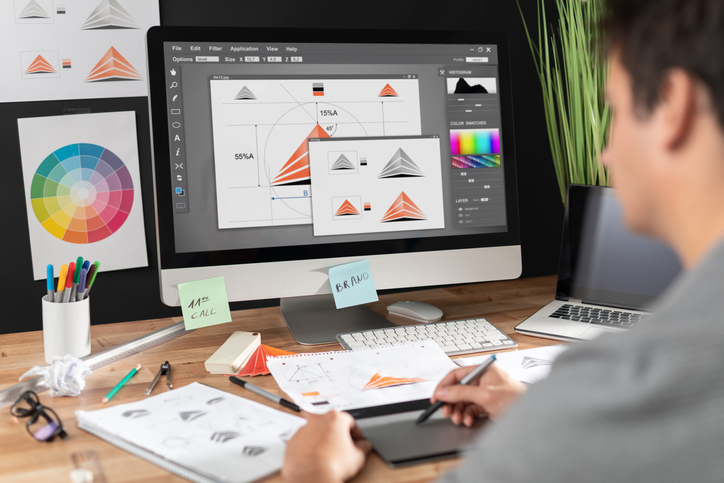Overcome Nervousness in Your Video-Conference Meetings
July 20, 2020How to Establish Trust with Potential Clients
July 21, 2020[Edit First, June 30, Business Tips]: 6 Simple Ways to Improve Your Graphic Design Skills
“There are three responses to a piece of design – yes, no, and WOW!
Wow is the one to aim for.”
(Milton Glaser, graphic designer & co-founder of New York magazine)
2020 is a great time to hone your hobbies and sharpen your skills.
What have you been learning in your quaran-TIME this year? One no-fail possibility is to brush up on your eye for design. Whether you are an amateur decorator, an urban planner, or you are planning a client presentation, small tweaks to any project can really enhance your reputation.
Before you embark on your next masterpiece, consider six basic DO’s and DON’Ts of design:
Fonts
DO worship classic typefaces.
Every designer needs an arsenal of tried-and-true typefaces that work for almost any project. Classic fonts are easy to read, balancing timeless elegance with contemporary style. Consider fonts like Garamond, Helvetica, Futura, Clarendon, Bodoni, Avenir, Orpheus, News Gothic, Canela, and Gotham, to name a few.
DON’T use any more typefaces in one layout than is absolutely necessary
Using fewer fonts increases readability, while too many fonts changes can distract and confuse the reader. Long multipage publications (such as booklets) can support a greater variety of typefaces, but for short brochures and ads, limit font families to just one or two.
Image Presentation
DO apply some sharpening to digital images.
Digital camera sensors and lenses always blur an image to some degree, and sharpening tools will improve the apparent image quality even more than upgrading to a high-end camera lens. Image sharpening provides a powerful option for emphasizing texture and drawing viewer focus.
DON’T use Photoshop or Adobe filters to disguise a low-quality image.
Bad images are bad images. When a photo lacks resolution or focal clarity, don’t slap a vintage or distortion filter on it and hope for the best. What can you do when there aren’t other options? When a high-resolution option (or a substitute graphic) absolutely will not work, print out the poor image and photograph it as a physical snapshot. Make the poor quality highly visible and part of the solution.
Layouts
DO create a focal point and natural movement for every layout.
Just like a musician reads notes on a staff, a reader should follow a visual journey through your design. For viewers to engage, they must have a path to follow, so try to tell a “visual story” with a beginning, middle, and end.
To move people through your piece, use bright colors to grab attention, jagged lines to build excitement, curves to slow people down, text sizing to create hierarchy, or bulleted lists and patterns to guide readers.
Whenever possible, tell your story with visuals rather than text!
DON’T use equally weighted objects on a page.
When your focal elements are the same size, it forces competition among them, which confuses and fatigues readers. Instead, allow for plenty of white space around your key element and call to action, giving these lots of room to shine.
Reduce the sizing and color of less important objects or use selective grouping to set important elements apart.
Create a Dynamic Viewing Experience
First impressions are lasting impressions. Whether you realize it or not, the design principles you use form the foundation of your publications, creating dynamic experiences before people read a single word you’ve written.
Need a hand? Through the planning, design, and review process, don’t hesitate to contact us. Whether you’re creating a template or need start-to-finish graphic design, we’re here to consult, create, and bring your best ideas to life.
![[Edit First, June 30, Business Tips]: 6 Simple Ways to Improve Your Graphic Design Skills](/wp-content/uploads/2015/10/308323_478x86.jpg)
